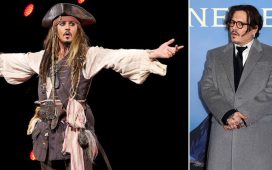At a time of great want, here was a story about a protagonist who is nothing if not insatiable in fulfilling her wants, consequences be damned. As Scarlett O’Hara famously decries after seeing the ruins of her cherished childhood home, the Tara plantation, “As God is my witness, they are not going to lick me. I’m going to live through this. And when it’s all over, I’ll never be hungry again!” It was revolutionary to readers and moviegoers to have a heroine who could be so vain and capricious, yet still have greater grit than any of the men in her world. And unfortunately, it’s still remarkable today for the “hero” of a major piece of pop culture to be an exceedingly flawed woman, one whose sins become almost a virtue.
Of course the world Mitchell builds around this anti-heroine is dishonest: a lie about the innocence of the Antebellum South. With it apologetic and happy-go-lucky depiction of slavery as a simpler, better time for wealthy white Southerners and the black Americans they kept in bondage, Gone with the Wind is far removed from the actual horrors of its world. And while Selznick’s movie attempts to slightly decrease that inherent racism, it also plays up its mythological aspect. With an air of Arthurian fable, the movie’s opening text reads, “Here was the last ever to be seen of Knights and their Ladies Fair, of Master and of Slave. Look for it only in books, for it is no more than a dream remembered.”
But that dream, and its emphasis on a heroine so flawed she becomes unstoppable, lives on in the less controversial modern fiction it influences, including Game of Thrones. For like the well-documented influences of J.R.R. Tolkien’s Lord of the Rings, or actual atrocities and triumphs in medieval history, Mitchell’s daydream of a lost world, and the life-destroying want that came after, pours over “A Song of Ice and Fire” and the HBO TV series it spawned.
The most obvious comparison between the texts is how much of Scarlett O’Hara is sprinkled across multiple heroines and anti-heroines who’ve made steel out of their trials by fire, chiefly Sansa Stark. Introduced as a “silly girl” in her sister Arya’s eyes, Sansa was dismissed by some readers and many viewers as the boring half of the Stark sisters. Whereas Arya initially exemplified a popular archetype in the 21st century, particularly in fantasy fiction, of the tomboy who will go on gender norm-defying adventures, Sansa appeared to be a prisoner of her courtesies and naïve love for patriarchal songs about “Knights and their Ladies Fair.” Worse, she enjoys those illusions and the spoiled privilege they bring, leading her to make selfish choices that hurt those around her.
Like Scarlett, who is introduced at age 16 as wallowing in her effect on the young men in the county, and instantly annoyed by boring talk of “war, war, war,” Sansa is oblivious in the first book of the political machinations conspiring around her. But then she was raised that way. As with Scarlett’s conceit before her, Sansa believes her ultimate life’s goal is to marry well, and she has set her eyes on the wrong man in Prince Joffrey. By the end of that first volume, the man she desires has destroyed her life by beheading her father and escalating a years-long war that will take everything. While Scarlett’s obsession with neighbor Ashley Wilkes is not as directly self-destructive, the war which comes, and that Ashley welcomes, still takes everything from her. And like Sansa, Scarlett takes much of it back, sometimes by bloody deed.














